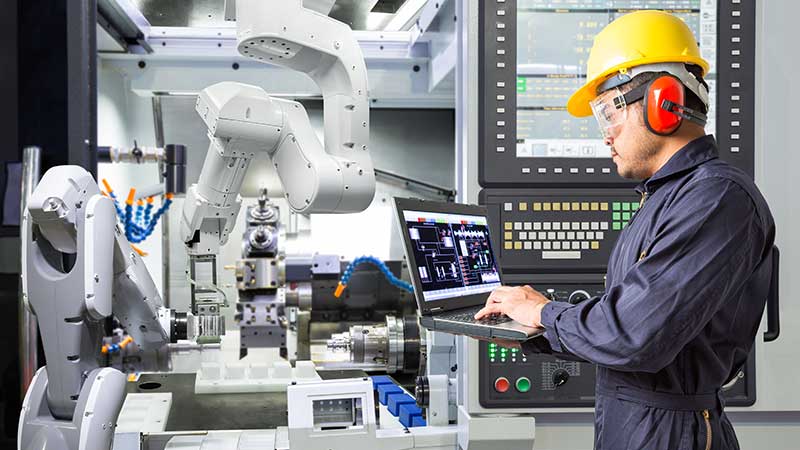
For years, we’ve heard dire warnings that technology poses a threat to millions of workers’ jobs. But during the COVID-19 pandemic, we’ve seen that technology can enable human work, the work of the future.
The coronavirus’ spread has accelerated the use of technology, whether automation or smart machines such as AI-enabled robots, that allows people to work from home or physically distance on the factory floor.
We also are gaining a better understanding of the shifting boundaries between the work that humans do, and the work technology and automation can help accomplish.
In my new book, “Human Work in the Age of Smart Machines,” I explore this idea with Ken Goldberg, a noted roboticist and engineering professor at the University of California, Berkeley. Goldberg has long argued that many pundits wrongly interpret the capabilities of advanced technologies and issue grim projections about how robots will eat our jobs.
Rather, Goldberg suggests, we should focus on how “what humans are good at is complementary to what machines can do, and vice versa.” He offers what he calls a “radically hopeful” vision in which society takes advantage of the capabilities of machines, understands our human limitations, and focuses on the development of knowledge and skills that will define the emerging terrain of human work.
Human work and technology can peacefully co-exist. Here are examples of two real people—Marcus Dodson and Joel Lewis—who show how this is done.
Dodson is assistant director of information services for the Tennessee Department of Treasury. When the pandemic abruptly forced the Treasury Department’s 275 employees to work remotely, Marcus and his team of white-collar IT workers immediately became more valuable to the agency’s operations. Laptops were dispatched, network security was strengthened, and new processes were developed to accept electronic tax filings.
He said his team was drawn closer as it collaborated to find new ways that technology could serve their needs and those of state taxpayers. “The situation has forced us to stop, listen, and think in completely different ways.”
More than 200 miles away, on the factory floor, Joel Lewis works as a longtime employee of Cummins Inc., an Indiana-based manufacturer of power generation and diesel engine products. For the past several years, one of his co-workers has been a robot.
Cummins has deployed what it calls collaborative robots, or “cobots,” as Lewis and his team call them, to work side-by-side with human workers. The smart machines, made possible by advances in sensor technology and artificial intelligence, allow robots and workers to share the same spaces a safe distance from other human workers on the assembly line.
This was the practice before the pandemic, but it’s become even more important for worker safety. Cummins’ intent is to make life easier for its workers, not to replace them. The cobots handle the repetitive or dangerous work that people don’t want to do. The company consults with workers about the roles cobots should play and how cobots can improve the manufacturing process.
Lewis views this shift in use of technology as a good thing. “We need to be able to work smarter, not harder,” he says.
The pandemic has exposed other challenges in the workplace. For instance, it’s robbed workers of the daily social interactions that bring them enjoyment and made it difficult for individual mentoring that can improve their knowledge and skills on the job.
Nonetheless, working remotely and the need for physically distancing have helped define, in new and creative ways, how human work can flourish with the adoption of technology such as automation, AI, and robotics.
Human work involves creativity, including imaginative approaches that people such as Dodson at the state of Tennessee and Lewis at Cummins take to solving problems. Humans and smart machines will coexist because human work requires innovation, and people possess knowledge, skills, and expertise that can’t be automated away.
Jamie Merisotis is president and CEO of Lumina Foundation. His new book, “Human Work in the Age of Smart Machines,” is available now.
